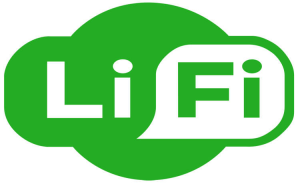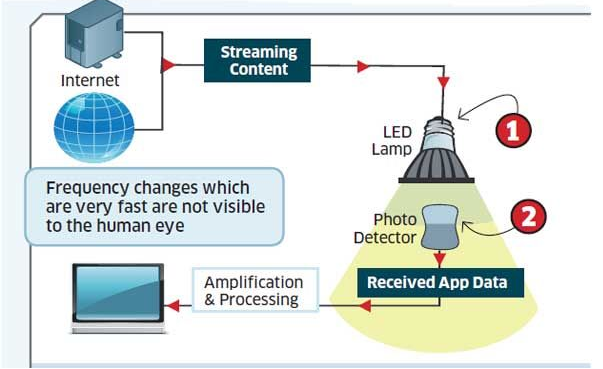Meet Li-Fi: A Light-Based Data Transmission Method Twice as Fast as Wi-Fi
 Most people in modern society are familiar with Wi-Fi (Wireless Fidelity), the most popular form of wireless data delivery that utilizes radio frequencies (RF) to transmit packets of data from the web to our beloved devices.
Most people in modern society are familiar with Wi-Fi (Wireless Fidelity), the most popular form of wireless data delivery that utilizes radio frequencies (RF) to transmit packets of data from the web to our beloved devices.
However, few people are aware that researchers have been experimenting with an exciting new form of data transfer called Light Fidelity, or “Li-Fi.”
The technology was originally demonstrated by Professor Harold Hass from the University of Edinburgh, who showcased it as “Visible Light Communication” in a 2011 TED talk.
Since that presentation, the breakthrough now known as Li-Fi had received relatively little attention in the mainstream media, primarily being tested in the academic field as a conceptual alternative to Wi-Fi.
That is until an innovative Estonian company Velmenni recently took the initiative to further test Li-Fi in an effort to compare the results with the performance of current Wi-Fi systems. The findings revealed what researchers have known for 5 years: Li-Fi is capable of transmitting data more than twice as fast as Wi-Fi, with a theoretical potential for speeds of up to 224 GB per second (compared to Wi-Fi's current max speed of 100 GB/second).
How Does Li-Fi Work?
The implementation of Li-Fi created by Velmenni is called Jugnu, a product that is intended to be a prototype of what would essentially be the first commercial Li-Fi setup. As the name suggests, Li-Fi uses light beams to stream embedded data at lightning fast speeds. Of course, this isn't surprising considering light travels faster than anything in the Universe.
A lamp driver receives streaming data from the web and encodes it into a signal, which is then transferred to an LED light that is equipped with a signal processor. The LED light then shines a special beam of light that is modified by tiny and rapid fluctuations in amplitude, which occur so fast they're invisible to the human eye.
The fluctuations are picked up by a photo detector that is positioned in the light beam's trajectory, which then converts the amplitude fluctuations into an electrical signal that is subsequently amplified and processed back into a data stream to be distributed to nearby devices via a receiver dongle.
Is Li-Fi Really a Practical Replacement for Wi-Fi?
Before you start getting too excited about ultra-fast internet speeds arriving through your home's light bulbs, it should be noted that the technology currently has some very serious and inherent limitations that will be very difficult, if not impossible, to circumvent.
First, Li-Fi cannot transmit data outdoors in sunlight or in areas that have any kind of significant light interference. Obviously, light cannot travel through walls or solid objects either. There has to be a clear, unobstructed, nearly light-free path between the LED lamp and the photo detector.
These challenges pretty much rule Li-Fi out as an immediate replacement for Wi-Fi, but what about further down the line?
Could Infrastructure Make Li-Fi a Technology of the Future?
There is a possibility that the technology could be greatly improved upon with the appropriate infrastructure. For example, buildings and cities could be equipped with specialized light tunnels and lamps that would allow light beams to travel uninterrupted over long distances and throughout structures.
Of course, such infrastructure could take a number of years to install, and there is the question whether the investment would be worthwhile, as the increased internet speeds may not provide enough economic benefits to outweigh the cost of so many always-on LED lights, as well as the manufacture and installation of the necessary infrastructure components.
Also, such an infrastructure would make Li-Fi much less flexible than Wi-Fi in terms of where and how it can be used. On the other hand, proponents have noted that Li-Fi may find niche applications being that light transmission could be a more secure and physiologically safer method of data transfer than the conventional RF transmissions we've become accustomed to.
Even if Li-Fi does eventually catch on, it probably won't become available commercially for at least a few more years, and it might never completely replace Wi-Fi. We'll keep you posted with developments on this exciting new technology. In the meantime, here's the video of Prof. Herald Hass' TED Talk presentation from 2011:

